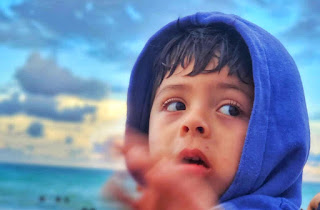- Using Camera Shots Series #3 -

- Using Camera Shots Series #3 - I knew we were going to 'meet' each other one more time!!! You already know the drill, get comfy, relax, and enjoy! This is the last part (for now) of this Camera Shots Series. So let the beginning of the end start with... The Over-the-Shoulder Shot " shows your subject from behind the shoulder of another character. Because it emulates perspective, it’s common in conversation scenes." With this shot, the ambient created during the dialogues is enhanced since you may only see the perspective of one of the parties but would not really know how the other party is taking the information/discussion given by seeing the facial expressions (if they can show them) because of the location over the shoulder of the shot. In this, over-the-shoulder shot, the dog's back is the one to supply such an angle so that the audience can only see the other party. With this, tense, funny, unorthodox situations, feelings, and reactions can be conveyed ...






